Plan Your Mount Kailash Tour from Malaysia
- Jennie
- Last Updated : 07/14/2025
Mount Kailash, with an elevation of 6,656 meters, is located in the Ngari region of Tibet and is considered one of the holiest mountains in the world. It holds great significance in Hinduism, Buddhism, Jainism, and Bon, and is regarded as a sacred site by millions of followers. Every year, thousands of Malaysian travelers, particularly those of Indian-Malaysian descent, embark on a pilgrimage to Mount Kailash to perform the kora (circumambulation) around the sacred mountain, with the hope of cleansing their souls and attaining inner peace and spiritual enlightenment.
However, for travelers from Malaysia, the journey to Mount Kailash is not an easy one. It involves several challenges, including visa applications, acclimatization to high altitudes, and the need to carefully plan the route, budget, and other logistics. This article provides a detailed guide to help Malaysian tourists smoothly undertake this sacred journey, thoroughly explaining each step involved in traveling to Mt.Kailash.
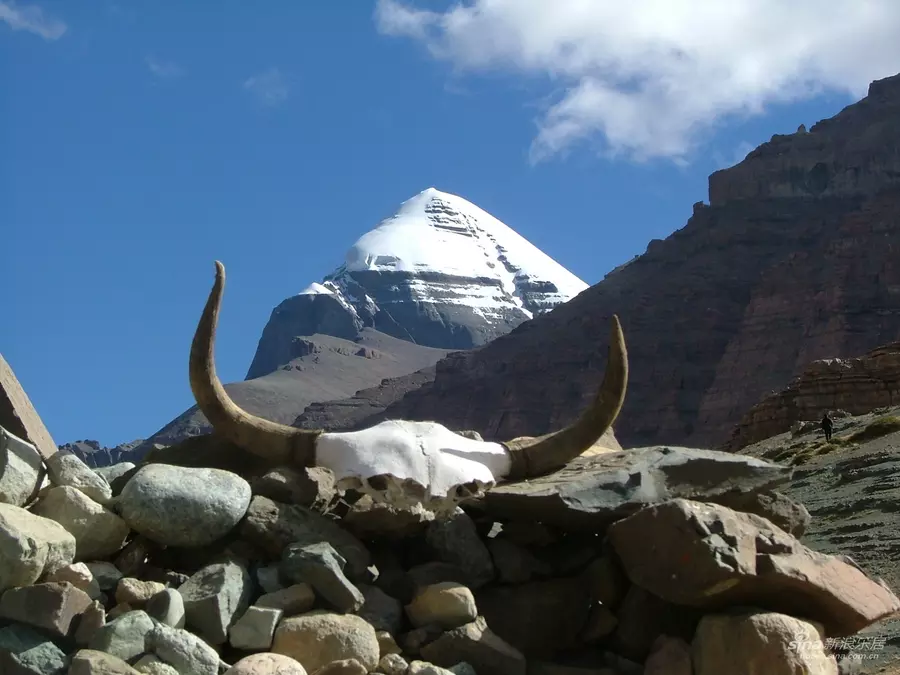
How to Get to Mount Kailash from Malaysia
From Kuala Lumpur, Malaysia, the flight distance to Mount Kailash, Tibet is approximately 10 hours. Currently, travelers can first arrive in mainland China or Nepal, then go to Mt.Kailash.
Malaysia to Mount Kailash via Mainland China
You can fly to mainland China first, then take a train or flight to Lhasa, and go to Mt.Kailash from Lhasa. The following two routes are recommended:
Via Chengdu/Chongqing
This is the most popular route among Malaysian tourists. Chengdu and Chongqing are major transportation hubs in southwest China, offering abundant flight options. Direct flights from Kuala Lumpur International Airport (KUL) to Chengdu Tianfu International Airport (TFU) or Chongqing Jiangbei International Airport (CKG) take about 4 hours 40 minutes, with economy fares of around MYR 633.
Currently, there are more than 15 flights from Chengdu to Lhasa and more than 10 flights from Chongqing to Lhasa Gonggar Airport (LXA) daily, taking roughly 2.5 hours, with economy fares of approximately MYR 590.
From Chengdu/Chongqing, you can also take a train to Lhasa on alternate days. The journey takes about 34.5 hours, and soft sleeper tickets cost around MYR 928. The Tibet train ride goes along the scenic Qinghai-Tibet Railway and helps travelers gradually acclimate to high altitudes.
Via Kunming
This is the shortest route. Daily direct flights from Kuala Lumpur International Airport to Kunming Changshui International Airport (KMG) take about 3 hours and 45 minutes. Flights from Kunming to Lhasa operate 4-5 times daily, with a flight duration of approximately 2 hours and 50 minutes. Economy fares are around MYR 746.
After arriving in Lhasa, you can choose to go overland to Mount Kailash or fly to Ngari Kunsha Airport (NGQ), which takes about 2 hours with fares around MYR 1890. There are more details for the itinerary later.
Malaysia to Mount Kailash via Nepal
Another good option is flying from Kuala Lumpur International Airport to Kathmandu Tribhuvan International Airport (KTM), which takes about 4 hours 45 minutes with fares around MYR 644. From Kathmandu, travelers can cross the Gyirong border into Tibet.
Alternatively, you can fly from Kathmandu to Nepalgunj (KEP), about a 50-minute flight costing around MYR 556. From Nepalgunj, you can take a helicopter to Simikot and then to Hilsa, crossing the bridge at Purang into Tibet. Chartering a helicopter is quite expensive, approximately MYR 8,446. Please contact us for specific prices for particular dates.
Recommended Itineraries
For Malaysian tourists, it's crucial to choose a suitable travel route. Here are a few main routes to help you make decisions based on your time, budget and physical strength.
Lhasa to Mount Kailash by Land (Classic Route)
This is the most classic and popular route, ideal for first-time visitors to Mount Kailash. The journey starts in Lhasa, allowing you to gradually acclimatize to the high-altitude environment while passing through key cultural and natural sights, such as Shigatse, Everest Base Camp, Saga, and Lake Manasarovar. The entire route covers about 1,500 kilometers, providing ample time to adapt to the altitude and reduce the risk of altitude sickness. After completing Kailash Kora, you can choose to return to Lhasa or travel via Kyirong to Kathmandu. Estimated trip duration: 12-15 days
√ 15 Days Lhasa Everest Kailash Group Tour
√ 12 Days Lhasa Everest Kailash Kathmandu Group Tour
Kathmandu to Mount Kailash by Land (Nepal Departure)
For those planning to enter Tibet via Nepal, Kathmandu serves as a convenient starting point. This route is direct and relatively simple, traveling through the Kyirong border into Tibet, passing through Saga and Lake Manasarovar, and finally arriving at the small town of Darchen at the base of Kailash. After completing the Kora (circumambulation), you can either return to Kathmandu via Saga or continue your journey towards Everest Base Camp before heading back to Lhasa. This route is suitable for travelers with more flexible schedules. Estimated trip duration: 9-13 days.
√ 9 Days Kathmandu Kailash Kathmandu Tour
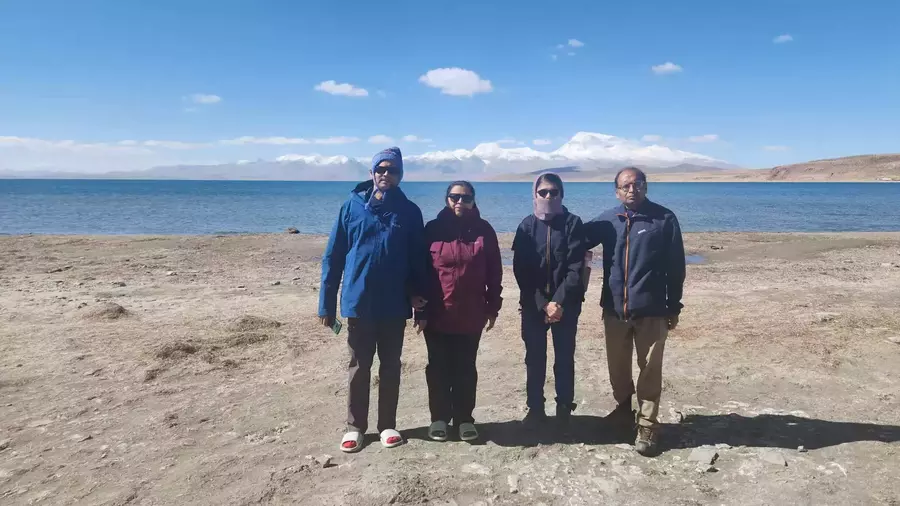
Lhasa to Mount Kailash by Air (Quick Route)
If you're short on time, flying might be a good option. You can fly to Lhasa, acclimatize to the high-altitude environment, and then take a flight from Lhasa Gonggar Airport to Ali Kunsha Airport, followed by a 200-kilometer drive to Kailash. Although this route is quicker, it carries a higher risk of altitude sickness and is more expensive. Therefore, it’s not highly recommended for those unfamiliar with high-altitude conditions. Estimated trip duration: 7-9 days.
Kathmandu to Mount Kailash by Helicopter (Luxury Route)
For those seeking a faster and more luxurious experience, a helicopter ride from Kathmandu is an option. This route includes flights from Kathmandu to Nepalgunj, followed by a small helicopter to Simikot and then to Hilsa. From there, a 100-kilometer drive takes you to Mount Kailash. This route not only saves time but also offers breathtaking aerial views of the Himalayas. However, it is an expensive option, suitable for those with a larger budget and limited time. Estimated trip duration: 10 days.
√ 11 Days Kailash Yatra by Helicopter from Kathmandu
Tips:
- Acclimatization to Altitude: Regardless of which route you choose, it’s important to consider the risk of altitude sickness. It is recommended to prepare for altitude sickness by carrying oxygen bottles and gradually acclimatizing to the high altitude.
- Time and Budget: Choose a route that fits your schedule and budget. If you have plenty of time and want to experience Tibetan culture and natural beauty deeply, the land route is recommended. If you're short on time, consider the air route, but be mindful of altitude-related risks.
- Physical Condition: The Kora around Kailash requires physical stamina, so it’s important to plan your trip based on your fitness level and health condition.
- No matter which route you choose, your journey to Mount Kailash will be an unforgettable pilgrimage, offering you the chance to experience the mystique and grandeur of Tibet.
Best Time to Travel to Kailash
The best time to visit Mount Kailash is between April and October, when the weather is relatively mild and ideal for trekking and sightseeing. Spring (May to June) and autumn (September to October) are the optimal times for Kailash yatra, as they avoid the rainy season and harsh winter conditions. These months offer moderate temperatures and breathtaking natural scenery. Summer (July to August) is also a peak trekking season, though it coincides with the rainy season in Tibet. However, due to the region's relatively low rainfall, most precipitation occurs in the evening and does not significantly impact trekking. Winter (November to March) in the Ngari region is extremely cold with frequent snowfall, making trekking unsuitable. Additionally, the Tibet Tourism Bureau does not issue Tibet travel permits for Kailash travel after November.
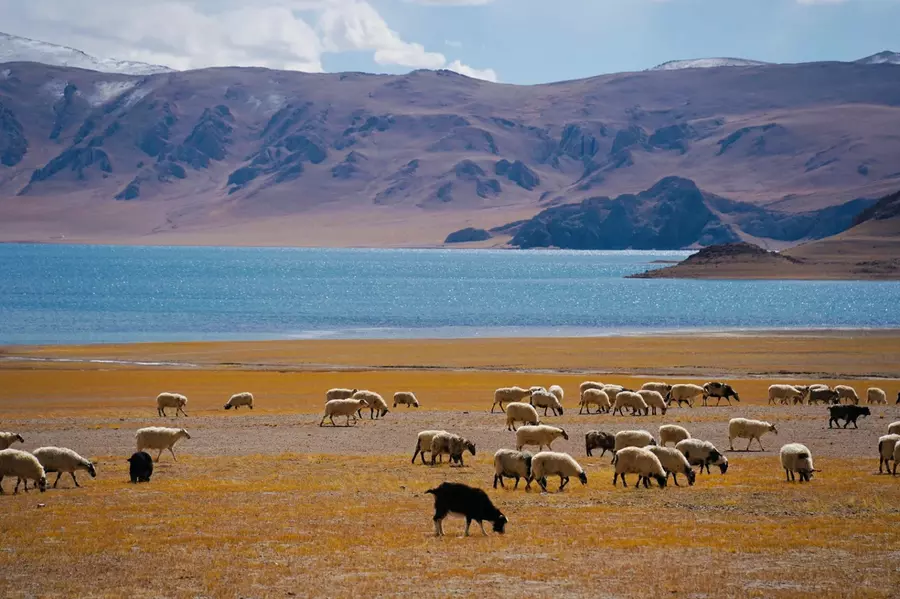
Required Documents for Mt.Kailash Trip
Generally, you will need a Tibet Travel Permit and either a Chinese visa or a Chinese group visa.
Important Tip: Until the end of 2025, Malaysian passport holders can visit China visa-free for up to 30 days. If traveling from Nepal to Tibet, you do not need a Chinese group visa and can enter directly.
For the Tibet Travel Permit, you first need to confirm your itinerary and book your Tibet trip with a travel agency. Afterward, your Tibet travel agency will assist you in applying for all the necessary permits for your Mount Kailash journey, including the Tibet Travel Permit, Alien Travel Permit, and Military Permit. The Tibet Travel Permit is issued by the Tibet Autonomous Region Tourism Bureau and can only be processed by a local travel agency.
Obtaining these permits to Kailash usually takes about one month, and you will need to provide a copy of your passport and Chinese visa (for travel from China to Tibet). Additionally, if entering Tibet from Nepal, you will need a group visa, which requires an invitation letter from the Tibet side. Please contact us in advance to ensure the application process goes smoothly.
Essential Travel Preparations
To ensure a successful Kailash pilgrimage, it’s important to address the following key considerations. Proper physical and mental preparation will make your journey much easier and more rewarding. What do you think?
Physical and Mental Preparation for Kailash Trek
One of the most common concerns for travelers is whether they will be able to successfully complete the pilgrimage trek around Mount Kailash. With adequate preparation, you can certainly accomplish this challenge and enjoy a sacred, meaningful journey.
Considering the high altitude of the Kora path around Mount Kailash (over 4,500 meters), it’s recommended to start aerobic exercises such as running, swimming, or cycling 3 to 6 months in advance to build strength and endurance. If possible, acclimate by visiting higher elevations beforehand to reduce the risk of altitude sickness. Avoid intense training in the month prior to departure and consult your doctor beforehand to confirm your health suitability.
Mentally, completing the pilgrimage yatra around Mount Kailash is not just a physical test but also a challenge of willpower. You need strong determination, perseverance, and spiritual readiness to withstand the tough environment and complete the Kora.
Travel Costs
Joining a group tour during peak season (July–early October) costs around MYR 9,724 per person; during off-peak times (early April–June and late October), around MYR 8,456 per person.
For private tours with two pax, prices start from MYR 12,684 per person in the off-season. Higher-end accommodations (4-star or above) will increase costs. Lunch and dinner are not included in the tour cost, typically costing MYR 13–63 per meal per person.
Additional services during the yatra, such as renting horses and guides (usually for three days), cost about MYR 1,818; porters for three days cost around MYR 634; yaks and yak herders for three days cost about USD MYR 1,268.
Accommodation and Meals
In Lhasa and Shigatse, options are diverse. If you prefer Indian or vegetarian food, many restaurants can accommodate your needs. However, in remote western Tibet, conditions are basic, and food choices are limited. Along the pilgrimage route to Mount Kailash, the accommodation is mostly simple guesthouses with shared bathrooms and communal dining areas. To enhance your comfort, we can provide sleeping bags. Food mainly consists of simple meals like boiled noodles, fried rice, etc., which may not suit everyone’s taste. It’s advisable to carry some snacks and energy foods. Vegetarian options such as lentils, vegetables, and Tibetan bread are available at teahouses, and some vendors sell fruit along the way.
Packing List
Bring a lightweight, durable backpack with padded straps and enough storage. Weather varies greatly, so carry layered clothing, including warm, waterproof, and breathable garments, along with thick socks. A comfortable, well-broken-in pair of trekking shoes with insoles for added comfort is essential. You may also want to bring a heart rate and oxygen level monitor wristband to track your health during the journey. Tibet's winds are strong, and the sun’s radiation is intense, so be sure to pack a hat, lip balm, sunscreen, moisturizer, and sunglasses. In addition, bring high-calorie food, water, and essential medications to alleviate altitude sickness, headaches, gastrointestinal issues, allergies, and other common ailments.
Let Us Help You Plan Your Kailash Trip
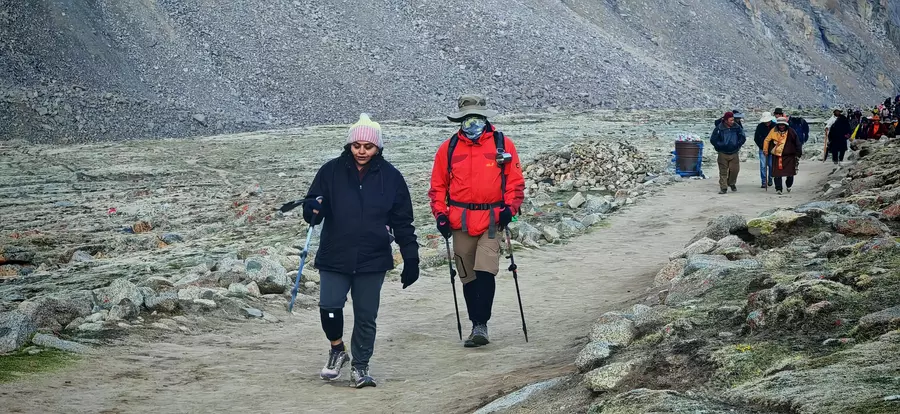
As a local Tibet travel agency recommended by Lonely Planet, Great Tibet Tour offers expert guidance to ensure your smooth Kailash pilgrimage. Our travel consultants can design itineraries and activities based on your needs, ensuring a worry-free journey. Contact us now!
Email response within 0.5~24 hours.


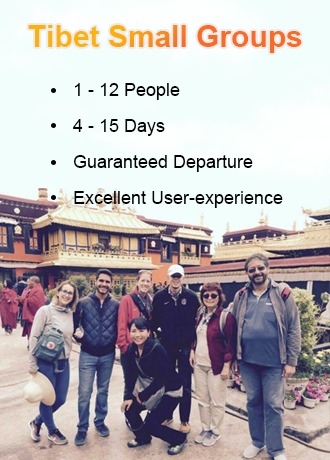
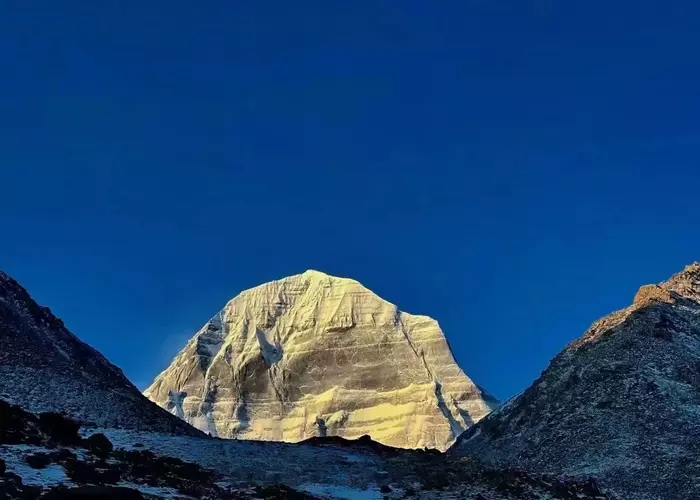

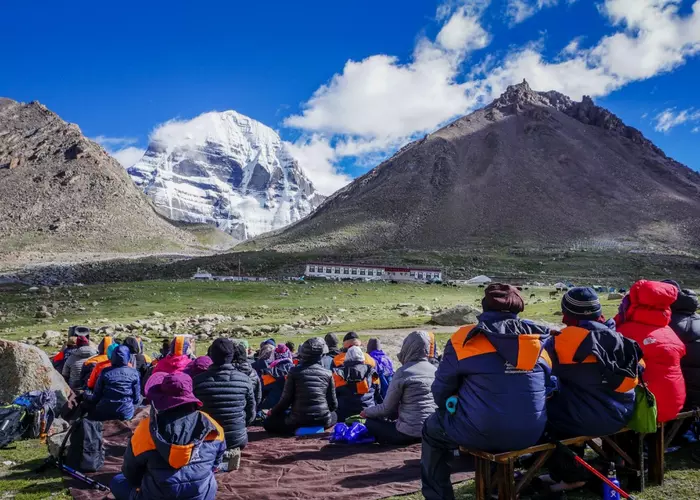
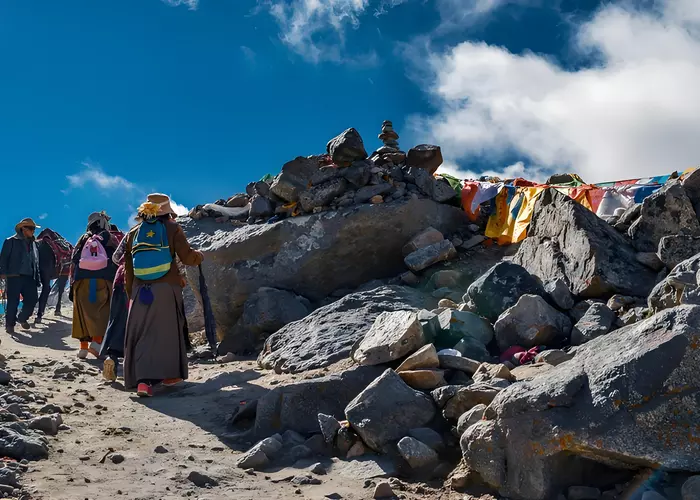

Typically Asked Questions from Our Clients
Asked by Mich***
Hi. Pls plan an itinerary to mount Kailash. Estimate 14-15 days from Kuala Lumpur Malaysia. Thanks.
Dear Mich***,
I recommend the 15-day Mt.Everest & Mt.Kailash Kora Pilgrimage Group Tour.